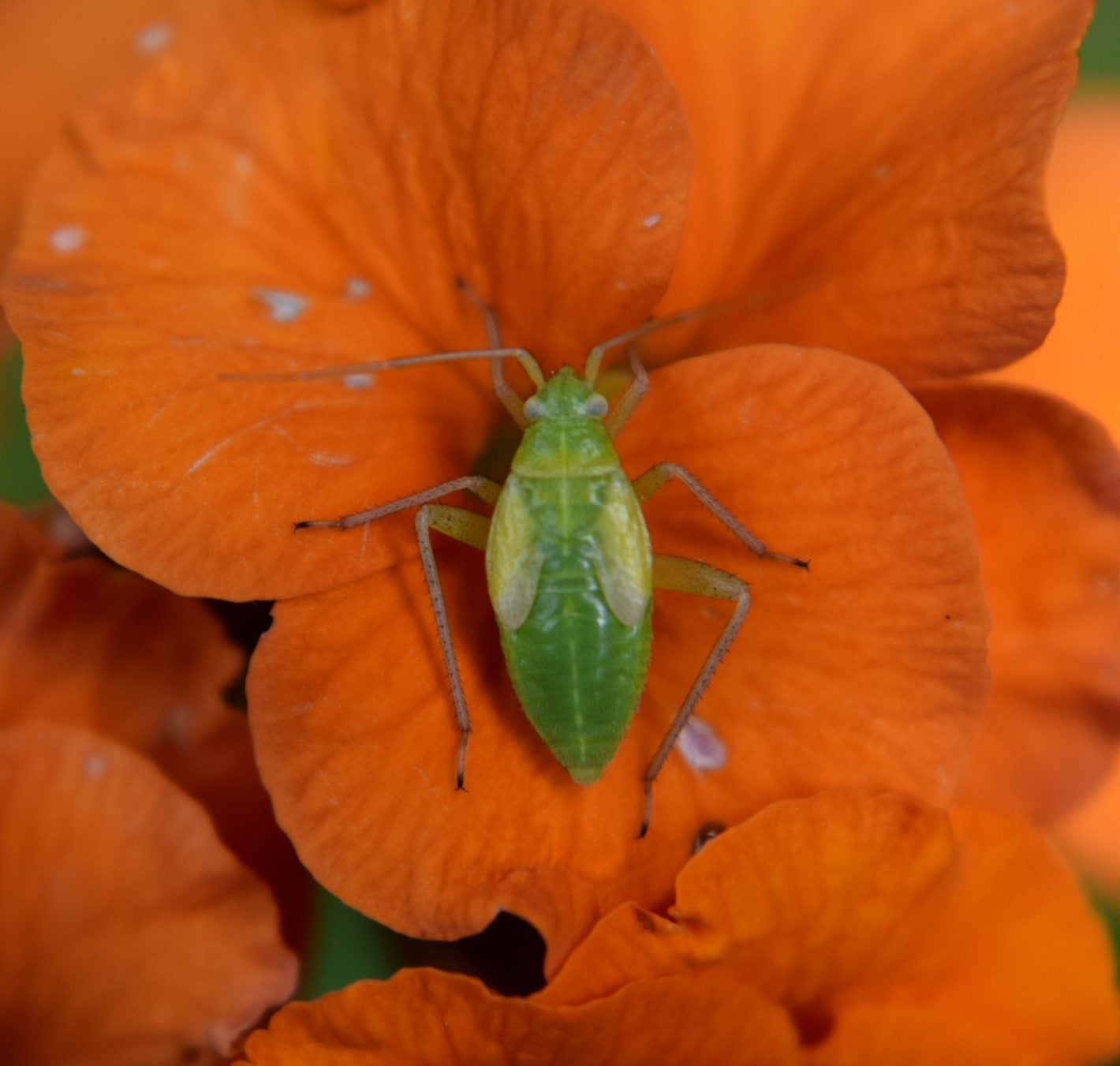Capsid Bug Treatment – Managing Capsid Bugs In Gardens


Small bolt holes in leaves, tattered edges, and corky, bumpy fruit may be an indication of capsid bug behavior. What is a capsid bug? It is a pest of many ornamental and fruiting plants. There are four main types of capsids, each of which focuses on specific plant species as their hosts. The insects feed on plant sap and damage is most common on plant tips in woody or herbaceous plants. Early capsid control is essential to preserving the foliage and fruit of your trees and shrubs.
What is a Capsid Bug?
There are any number of pests that can do damage to your plants. Capsid damage is usually not deadly, but it can seriously reduce the beauty of your plants and make fruit corky and rough. The capsid life cycle spans from larval to nymph to adult. These bugs overwinter in plant material or in trees and bushes. Feeding activity is at its peak from April to May for nymphs and June and July as adults. If you have ever seen tiny, bright green beetle-like bugs on your apples, roses, potatoes, beans, dahlias, and other plants, they might be capsid bugs. These insects are less than a fraction of an inch long, bottle green, and when they fold their wings there is a distinctive diamond pattern on their backs. The insects feed on plant sap and damage is caused by a toxin they inject into plant tissues, which kills the cells in that area. Primarily, young shoots and tender buds are affected but they may also damage mature material. It is not always necessary to implement capsid bug control unless the insect is damaging food crops. Most of their feeding activity is minimal and only cosmetic damage results.
Capsid Bug Symptoms
The capsid bug life cycle is a year. Most varieties overwinter as adults in leaf litter and then lay eggs in May. The apple capsid overwinters as eggs in the bark of apple trees and begins feeding when they hatch in spring. These bugs feed on leaves initially and then move onto shoots and developing fruit. Foliage and fruits will have brown, rough areas which are hollow and tend to tear at the edges. Fruits become callused and tough in spots but are still edible. A second generation of all capsid bugs occurs except with apple capsid. It is the second generation that is often the most damaging. For this reason, managing capsid bugs should occur well into the growing season to minimize damage to late season fruits and other crops.
Capsid Bug Treatment
If only minimal damage is observed, it is not necessary to do more than keep dropped leaves and plant matter cleaned up to prevent capsid hiding places. Capsid bug treatment for heavily damaged plants should be done with a pyrethrin based pesticide, which is natural and safe to use in the home landscape. Wait to spray flowering plants until flowers are spent. These types of pesticides require more frequent spraying than synthetics. In heavy infestations, managing capsid bugs with formulas containing thiacloprid, deltamethrin, or lambda-cyhalothrin is recommended. Apple and pear trees can be treated with any of these formulas after the flowers have dropped. In most cases, however, chemicals are not necessary, and the insects will have already moved on.
Gardening tips, videos, info and more delivered right to your inbox!
Sign up for the Gardening Know How newsletter today and receive a free copy of our e-book "How to Grow Delicious Tomatoes".

Bonnie Grant is a professional landscaper with a Certification in Urban Gardening. She has been gardening and writing for 15 years. A former professional chef, she has a passion for edible landscaping.
-
 ‘Coral Charm’ Peony Care For Sublime Semi-Double Peonies With Lush Salmon Pink Flowers
‘Coral Charm’ Peony Care For Sublime Semi-Double Peonies With Lush Salmon Pink FlowersPeonies are known for their soft baby pink or magenta tones, but if plushy coral blooms are your thing, here’s our guide to the ultimate ‘Coral Charm’ peony care
By Tonya Barnett
-
 How To Grow Seeds Quickly: 8 Expert Tricks For Fast Flowers & Crops
How To Grow Seeds Quickly: 8 Expert Tricks For Fast Flowers & CropsIt's never too late to start growing! Jump-start your flower or vegetable garden with these pro tips and tricks for germinating seeds in record time.
By Amy Grant